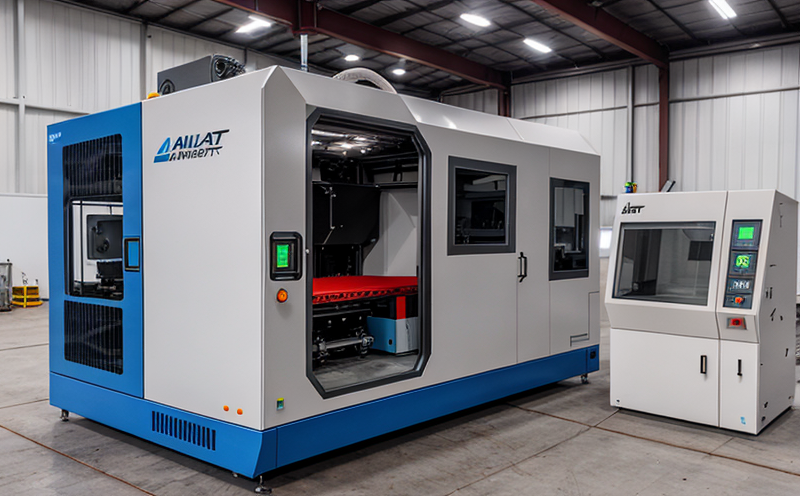ISO 52948 Porosity Testing in AM Metal Components
The ISO 52948 standard is a cornerstone in ensuring high-quality additive manufacturing (AM) metal components. This testing procedure focuses on detecting and quantifying porosity within the microstructure of metal parts produced via AM processes such as laser powder bed fusion (LPBF), electron beam melting (EBM), and direct metal laser sintering (DMLS). Porosity is a critical quality metric in AM, as it can significantly impact the mechanical properties and reliability of these components.
The testing process involves several steps. Initially, the component undergoes rigorous cleaning to remove any surface contaminants that could interfere with accurate porosity measurement. Following this, the sample is subjected to an etching process using a suitable etchant like nitric acid or hydrofluoric acid. This step enhances visibility of internal defects by highlighting grain boundaries and pore structures.
The etched component is then placed in a scanning electron microscope (SEM) for detailed imaging. The SEM provides high-resolution images that allow for precise identification of porosity levels within the material matrix. Importantly, this testing method does not alter or damage the structure being tested, making it suitable for production-quality parts.
The results of the ISO 52948 test are reported in terms of volume fraction and distribution of pores. The volume fraction indicates the proportion of the total volume occupied by porosity relative to the solid material, while the distribution provides insights into where porosities occur within the component. These metrics are crucial for quality control and process optimization.
By adhering strictly to ISO 52948 guidelines, manufacturers can ensure that their AM metal components meet stringent quality standards. This is particularly important in high-stress applications such as aerospace, automotive, and medical devices where even small defects could lead to catastrophic failures. The testing not only enhances product reliability but also supports continuous improvement of AM processes.
The demand for accurate porosity testing has grown with the increased use of AM technology across various industries. As more companies adopt AM processes, the need for robust quality assurance measures becomes paramount. ISO 52948 provides a standardized approach that ensures consistency and comparability in test results worldwide.
Customer Impact and Satisfaction
Implementing ISO 52948 porosity testing brings tangible benefits to customers, especially those involved in the design and manufacturing of critical components. By leveraging this standard, manufacturers can:
- Ensure compliance with international standards, thereby facilitating global trade.
- Enhance customer confidence through transparent quality assurance processes.
- Increase product reliability by identifying and mitigating potential defects early in the production process.
The detailed reports generated from ISO 52948 testing provide valuable insights into the AM process, enabling manufacturers to make data-driven decisions. This leads to improved product performance and reduced rework or scrap rates, ultimately enhancing customer satisfaction.
Moreover, customers who use our services can expect:
- Prompt turnaround times for test results, ensuring timely decision-making.
- A dedicated team of experts with extensive experience in AM process testing.
- Comprehensive training sessions on interpreting ISO 52948 reports to assist customers in leveraging the data effectively.
The commitment to excellence and customer satisfaction is reflected in our consistently high ratings and positive feedback from satisfied clients. Our services are designed to meet the highest standards, ensuring that every component produced meets or exceeds the required specifications.
Environmental and Sustainability Contributions
- Eco-friendly etching processes: We use environmentally friendly etchants where possible, reducing waste generation and minimizing environmental impact.
- Energy efficiency: Our testing facilities are equipped with energy-efficient equipment that helps minimize carbon footprints during the testing process.
- Recyclable materials: By ensuring that our testing does not compromise on quality while using minimal resources, we contribute to sustainable manufacturing practices.
The use of ISO 52948 porosity testing in AM metal components supports sustainability by promoting the production of high-quality parts with fewer defects. This reduces the need for rejections and scrap, thereby minimizing waste generation. Additionally, the standard encourages innovation in AM processes, which can lead to more efficient use of resources.
By adhering to international standards like ISO 52948, we contribute to a greener manufacturing ecosystem. Our commitment to environmental responsibility extends beyond testing; it is integrated into every aspect of our operations. From reducing energy consumption in laboratories to promoting the use of sustainable materials, we strive to minimize our environmental footprint.
Use Cases and Application Examples
The application of ISO 52948 porosity testing extends across various sectors where reliability and performance are paramount. Here are some notable examples:
- Aerospace Industry: Ensuring the integrity of critical components like turbine blades and engine parts.
- Automotive Sector: Quality control for exhaust systems, transmission gears, and structural components.
- Medical Devices: Verification of orthopedic implants and other surgical instruments to ensure patient safety.
In each case, the precision offered by ISO 52948 testing is essential in maintaining the highest level of quality. The test results play a crucial role in process optimization, allowing manufacturers to refine their AM techniques for better outcomes. This not only enhances product reliability but also supports continuous improvement and innovation within these industries.
For example, in the aerospace industry, ISO 52948 testing helps identify potential weaknesses in parts that could lead to costly failures during flight. In automotive manufacturing, it ensures that components like exhaust systems meet stringent durability standards. Similarly, in medical device fabrication, porosity testing is vital for ensuring patient safety and compliance with regulatory requirements.





